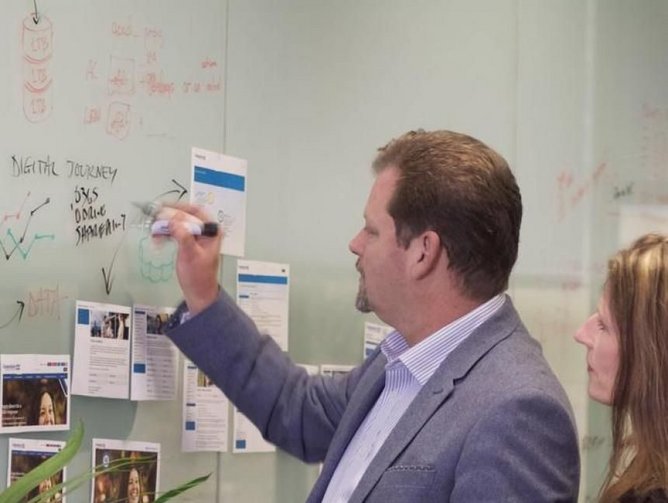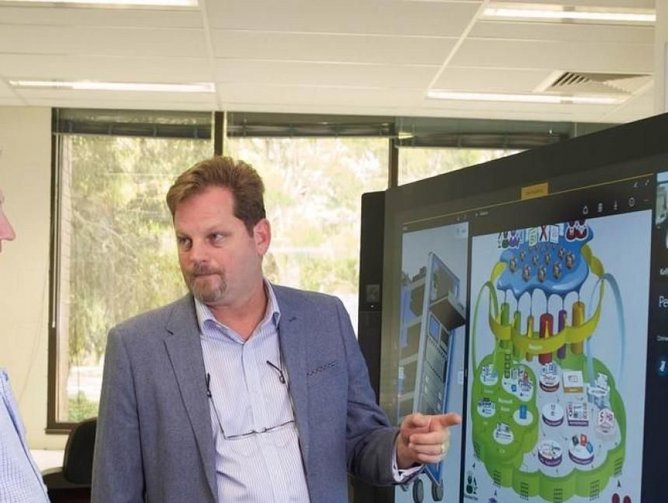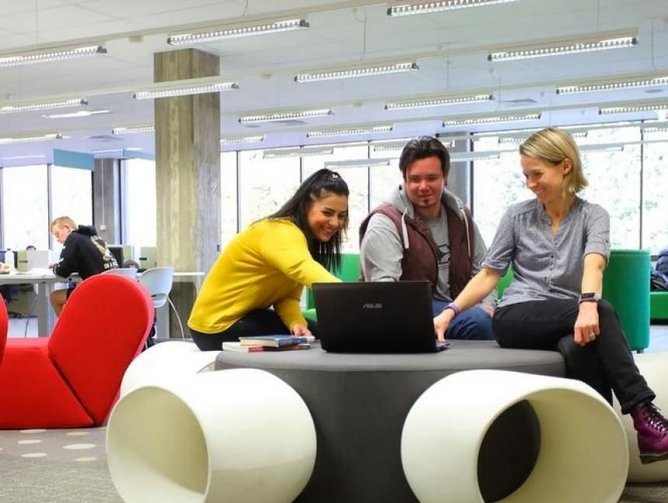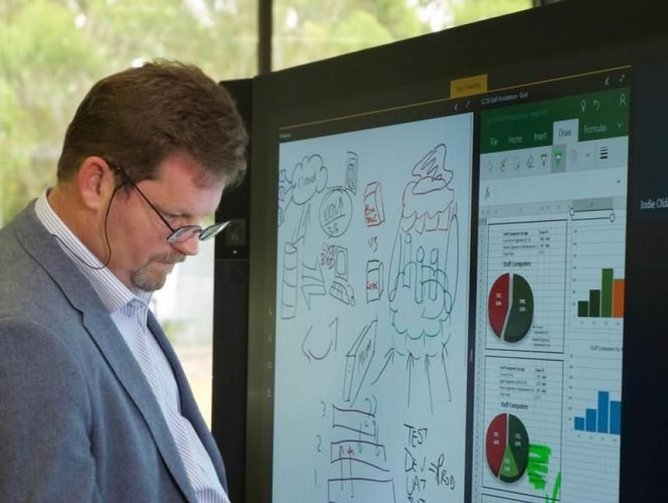Every business has been disrupted by technology, and the higher education sector is no exception. Even at long established universities, the days when students were content to devote three or four years of their lives and engage in a highly limited number of courses, mainly unrelated to real world issues and employer expectations, are firmly in the past. In any case the sheer numbers of students aspiring to higher education and degree level technical programmes have stressed the old model to breaking point.
Federation University Australia (universally known as FedUni) traces its origins back to the former Ballarat School of Mines, founded in 1870 and later transformed into the University of Ballarat. In 2014 the University amalgamated with the Gippsland Campus of Monash University, and FedUni was born. It is one of a small group of universities in Australia that embrace both traditional higher education and the more directly vocational TAFE (Technical And Further Education) strata of education. It was constituted as predominantly a regional institution serving Victoria, the most densely populated state in Australia, but there has also been growth in its international footprint with a new support centre in Malaysia and partner institutes in other parts of the Asia Pacific region including the likes of Hong Kong and Beijing. FedUni has opened a further campus in Berwick, Melbourne and about to open a new Brisbane campus later in the year. The Good Universities Guide has rated FedUni and its predecessor at five stars for Teaching Quality eight years in a row.
Executive Director of ITS and Business Solutions (CIO) Andrew Tully, has very succinctly summarised the challenge facing the expanded institution. “In a competitive market defined by students juggling full-time study with part-time employment, or increasingly mature-age students juggling full-time employment, the student experience is enhanced by institutions that accommodate this and offer flexible course delivery with personal teaching engagement.” Significantly, these models are opening up new market segments such as working adults or full-time carers who are unable or do not wish to commute long distances to a university campus. Similarly, there are life-long learners who do not wish to be constrained by the traditional 24 units of study but who want to ‘cherry pick’ units of study.
Most universities and TAFE institutions are facing the same challenges. At FedUni this challenge of how to provide a 'blended' solution of online and on-campus provision is being met head on by Tully who was appointed just a year after the university was amalgamated with the mandate to transform the complex yet disparate technology landscape across the institution. It's acknowledged that students will increasingly access their teaching and learning content on mobile devices, tablets anywhere, anytime. Cloud computing is disrupting the economics of delivering and supporting legacy IT systems, making ICT environments more readily available to smaller and medium sized enterprises, and giving them the ability to scale up and down as circumstances change. Large corporations are seizing the opportunities offered by capturing and managing big data, and keeping a very close watch on emerging technologies that can be bought in as a service, such as artificial intelligence (AI) and predictive analytics. By making effective use of these new realities forms a key part of the university's Hybrid Cloud Strategic plan for 2020.
From 2014, the university has faced a variety of challenges, from digital disruption impacts, impending deregulation and potential reduction of fee subsidies at the state and federal levels. “Our vision was to transform a local university into a global operator in a context of an ever evolving sector whilst taking advantage of the benefits and opportunities digital disruption offers. This is the challenge I am addressing at the moment,” says Tully. For a small university with comparatively limited IT resources compared with many of the larger Australian universities, this was a big ask. Straight away he tackled the task of transforming the ICT team into an 'information and technical services directorate' (ITS), in the process ending up with what he describes as a cross functional, bi-modal, integrated business service model. “Today our 64-strong ITS team is very adaptable, very agile, and capable of taking on complex technological problems” Tully adds. His boast is that with half the numbers of his closest competitor he can service the likes of blended on line learning, student retention and the other strategic priorities identified in the 2016 to 2020 Master Plan, which is arguably more complex than that of other institutions which don't offer TAFE. What he has been able to create is a lean ITS service aligned with Enterprise Architecture principles whilst embracing a “lean manufacturing ethos” – delivering more with less.
How is this being achieved? “We baked a cake!” says Tully – more of that later. Strategic partners Microsoft, Oracle, HP, and fraXses were invited to join the discussion. At the table, he gave each of them a FedUni baseball cap to emphasise the collaborative approach he wanted as one team. “This combination of these key partners has helped us develop our future architectural vision of where we could go at a technical level, using the Gartner PACE model, focusing on Systems of Record, of Differentiation and of Innovation. We mapped our entire technology footprint against those three, and created a fourth which we called our Core Enabling Infrastructure. From there we went on to build our architecture blueprint based around ten core principals, some of those being ‘Student Centric, Educator Driven’, ‘Reuse, Buy then Build’ and ‘Information is an asset’ to name a few.”
Once the structure of the team had been transformed and the cross functional bi-modal model was in place he set about building a 'borderless' technology footprint for the university. As part of the community engagement mission, in partnership with organisations in the Ballarat region like utilities, regional health and local councils, a partnership has started that is looking at sharing technologies and pooling resources that will not only help local organisations but assist the university meet regional challenges that 'metropolitan' universities might not face. Retaining and maximising technical resources is a good example. Ballarat is a relatively small place with limited resources, and FedUni relies on true partnerships to consolidate expertise from wherever it can find it.
The digital plan aims to enhance the blended learning and teaching experience that had contributed to the consistent five star rating. FedUni had no wish to go along the online-only road because it wanted to maintain its personal relationship with its students while leveraging the potential of other forms of online service provision. “We have a lot of students, including more mature students, who may not be as inclined to be as technology comfortable as their younger contemporaries. We want to create a positive learning experience for them all empowered by a digital campus experience that’s engaging, supportive yet lean.”
The academic equivalent of customer churn, the process whereby competitors and new entrants to the market pinch customers from incumbent retailers or service providers, is student drop out. Not in the traditional sense, but students who are attracted away from universities by more flexible course providers. For FedUni the competitive market, fee deregulation and pure online providers are among the factors that challenge enrolment numbers and halt the decline in student retention. This is where one of the core principles in IT is key – Information is an asset. The university sits on plenty of data but that data was dispersed across various locations, through many systems, in multiple databases including PeopleSoft, Oracle, Postgress, MS SQL, Access, and in Excel and CSV files. The mass of data residing in social media formed another great pool, but these sources were hard to access and not joined up. “We couldn't easily identify which students were vulnerable: imagine the positive effect on student retention if we could use that material to give us insight into their individual situation? What is driving them, and what is holding them back, what else can we do to support them? What a personalised experience our student and teachers will have with such support and insight,” says Tully.
To address this the ITS team turned to fraXses, a UK based company that has sounded the death knell for the traditional data warehouse. As a start fraXses explored and discovered the data repositories to establish what data existed, creating a single view by federating the different sources. It created what he describes as a ‘mature view of institutional data’, which at last brought some clarity to management, underpinning decisions realising the value of data. “Further to this, we’re constructing our ‘Intelligent Data Lake’ to enhance big data functionality.” In adopting this targeted approach and maximising its information assets, Tully scored a first. “FedUni was the first university to embrace Federated Data Virtualisation to get big data at our fingertips,” he says. “We leapfrogged over the traditional data warehouse model saving the University from significant investment. FedUni is breaking the mould”. Also, the ability to personalise data has affected more than just the human assets of the university – it has allowed it to take a more targeted approach to upgrading its assets, saving a lot of money – another lean initiative if you like.
To describe the complex IT structure that has been built we need to go back to the cake mentioned earlier. It's an ingenious and graphic way to describe to the layman what can be a perplexing series of layers, but Andrew Tully's recipe is simplicity itself.
In the past he has used the relatively simple pizza as an analogy to describe the core and legacy systems: “You have the base, which is our core technology and on that different flavours that meet the tastes of the different people who like peperoni, pineapple and so on. The cheese in the middle is the information technology that glues it all together.”
But the target for 2020 is a bit more interesting than that.
His cake has two layers. The first “sponge” he calls the base layer, this is the Microsoft Azure Cloud, containing elements from what they refer to as the “Microsoft Experience”, productivity and communication tools within Office 365, OneDrive and Skype for Business, SharePoint and CRM offering scalability and backup. “All of that is being provided through our Microsoft partnership,” he explains. Going a little further up, the Amazon cloud is a 'lake' of ' jam' with tasty systems of innovative technology to be found in it such as data virtualisation and ESB (Enterprise Service Bus). As we move through the stack we have some “large pieces of 'chocolate', which represents institutional data within our Systems of Record and Differentiation – that is where Oracle and fraXses comes in providing us enterprise grade systems and metadata acquisition / analytics respectively”. The next ‘sponge’ layer includes the optimisation of existing on premise HP infrastructure along with the acquisition of new devices to create reliable on premise disaster recovery (DR). Here, Finance and HR systems are among the legacy functions represented within this hybrid cloud model. The 'icing' on the cake, is the fraXses technology we mentioned above, which assesses and categorises data and makes it accessible to the institution as FedUni does not have a data warehouse like all the others and the team is proud being the ‘first’.
As digital personalisation becomes more commonplace in our daily lives, so too should staff, students, lecturers and researchers enjoy a slice of this IT cake that contains the 'flavour' specifically designed for them by simply selecting their own 'fruity piece'. Everyone in the organisation, from Council members to the newest student, can select their 'cherry'. “In the future, consumers of my cake will get, the progressive digital campus experience, the information, the ‘flavour’ they want, anytime and anywhere.”
In what it is doing, FedUni's ITS team has found a way of punching way above its weight, and made its mark in Australia and globally. Andrew Tully likes to think of it like the little unremarkable and shabby car, a kind of 'Herbie', which laps all the shiny (and much better funded) teams in the race, because they are encumbered by their monster truck tyres. “We are starting to pass, one by one, the competition because our tyres are right. We are a lean and highly focused team of passionate resources, and have chosen our partners with care. So, data is king and the user based experience persona is queen within our hybrid Cloud architectural model. Underpinned by a cross functional, bimodal and adaptive team being the key. If you have the right data and the right approach and a team that is motivated, you can do anything you want to.”








